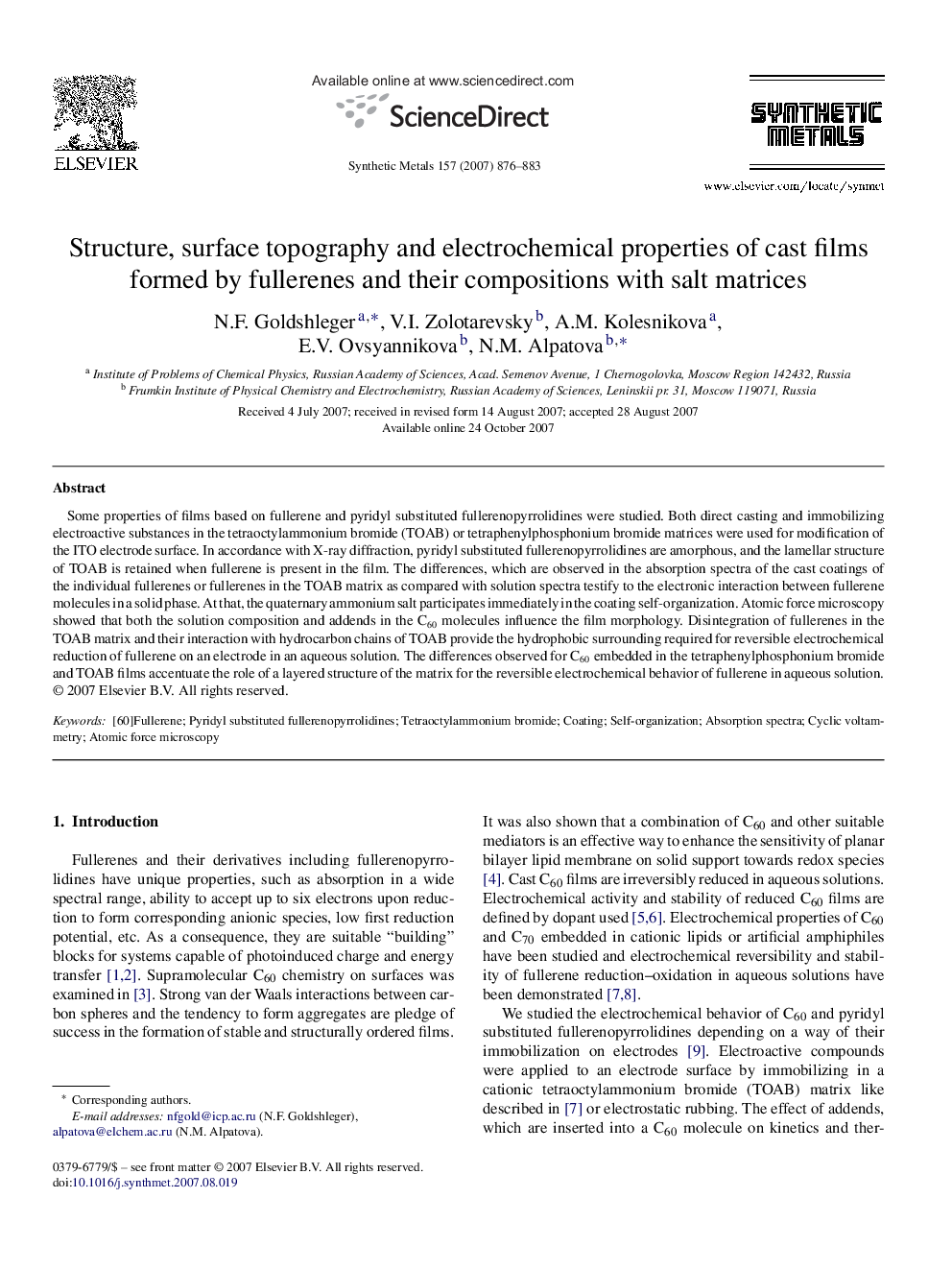| Article ID | Journal | Published Year | Pages | File Type |
|---|---|---|---|---|
| 1442951 | Synthetic Metals | 2007 | 8 Pages |
Abstract
Some properties of films based on fullerene and pyridyl substituted fullerenopyrrolidines were studied. Both direct casting and immobilizing electroactive substances in the tetraoctylammonium bromide (TOAB) or tetraphenylphosphonium bromide matrices were used for modification of the ITO electrode surface. In accordance with X-ray diffraction, pyridyl substituted fullerenopyrrolidines are amorphous, and the lamellar structure of TOAB is retained when fullerene is present in the film. The differences, which are observed in the absorption spectra of the cast coatings of the individual fullerenes or fullerenes in the TOAB matrix as compared with solution spectra testify to the electronic interaction between fullerene molecules in a solid phase. At that, the quaternary ammonium salt participates immediately in the coating self-organization. Atomic force microscopy showed that both the solution composition and addends in the C60 molecules influence the film morphology. Disintegration of fullerenes in the TOAB matrix and their interaction with hydrocarbon chains of TOAB provide the hydrophobic surrounding required for reversible electrochemical reduction of fullerene on an electrode in an aqueous solution. The differences observed for C60 embedded in the tetraphenylphosphonium bromide and TOAB films accentuate the role of a layered structure of the matrix for the reversible electrochemical behavior of fullerene in aqueous solution.
Keywords
Related Topics
Physical Sciences and Engineering
Materials Science
Biomaterials
Authors
N.F. Goldshleger, V.I. Zolotarevsky, A.M. Kolesnikova, E.V. Ovsyannikova, N.M. Alpatova,
